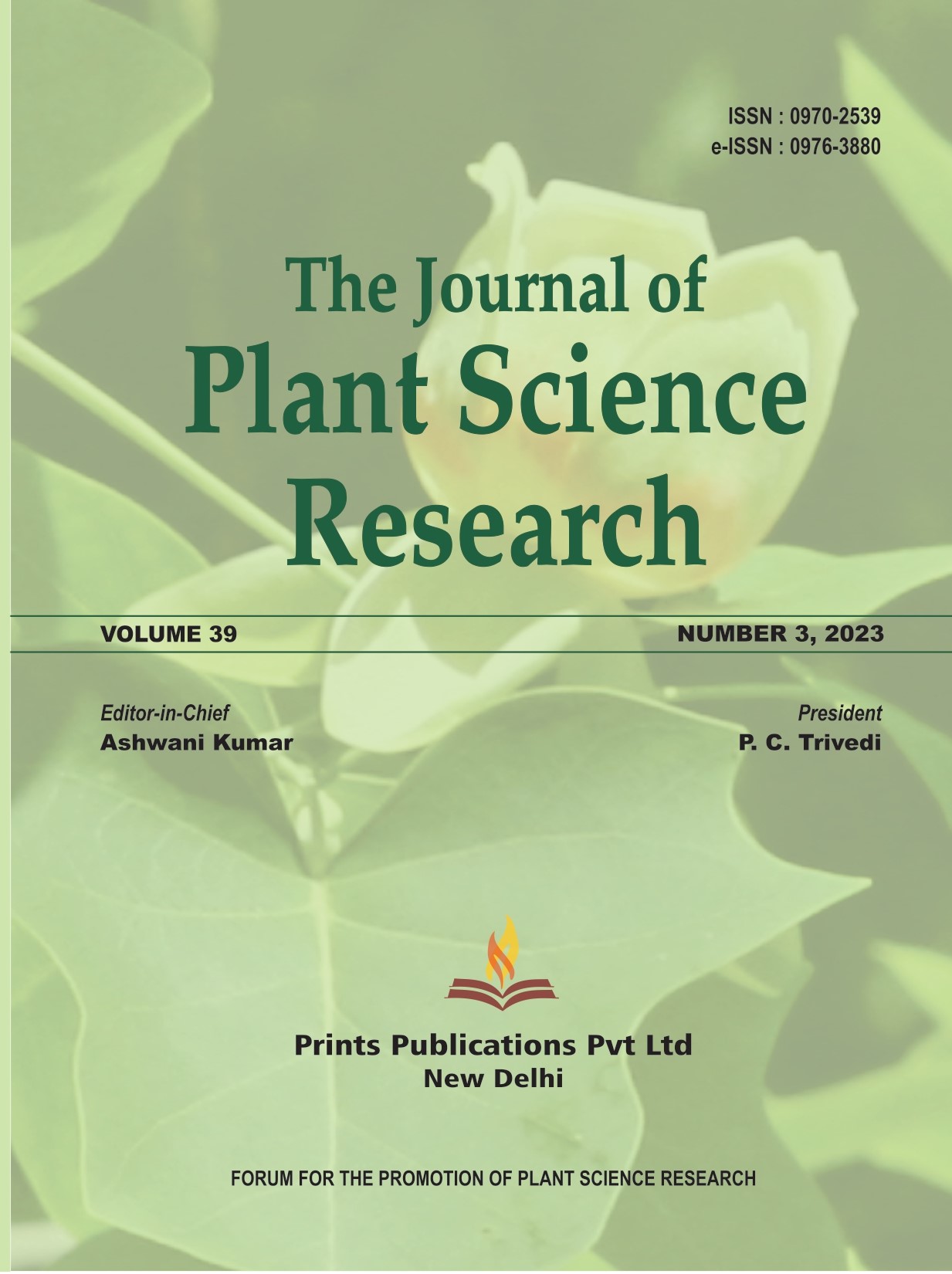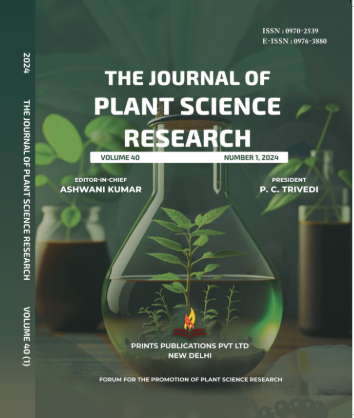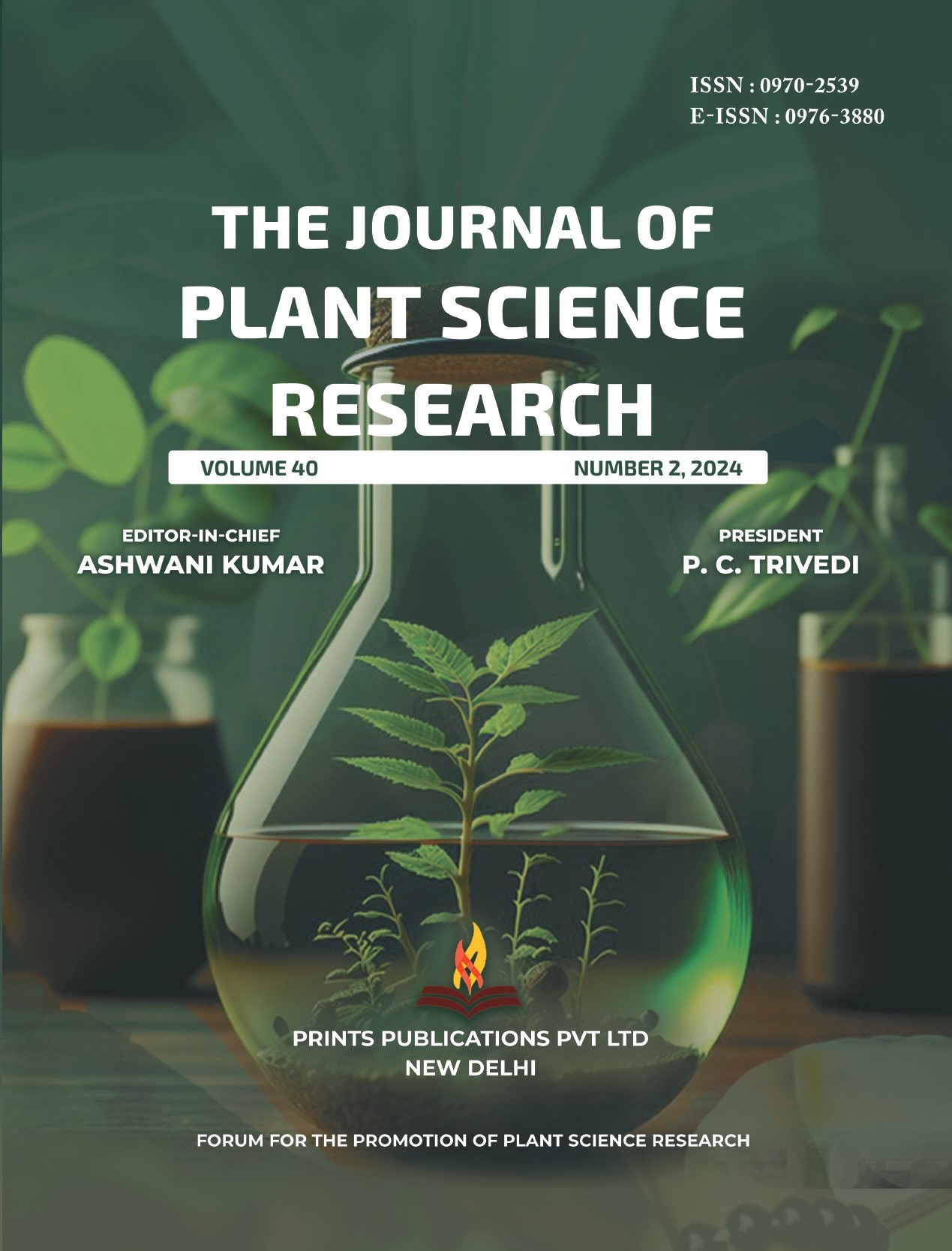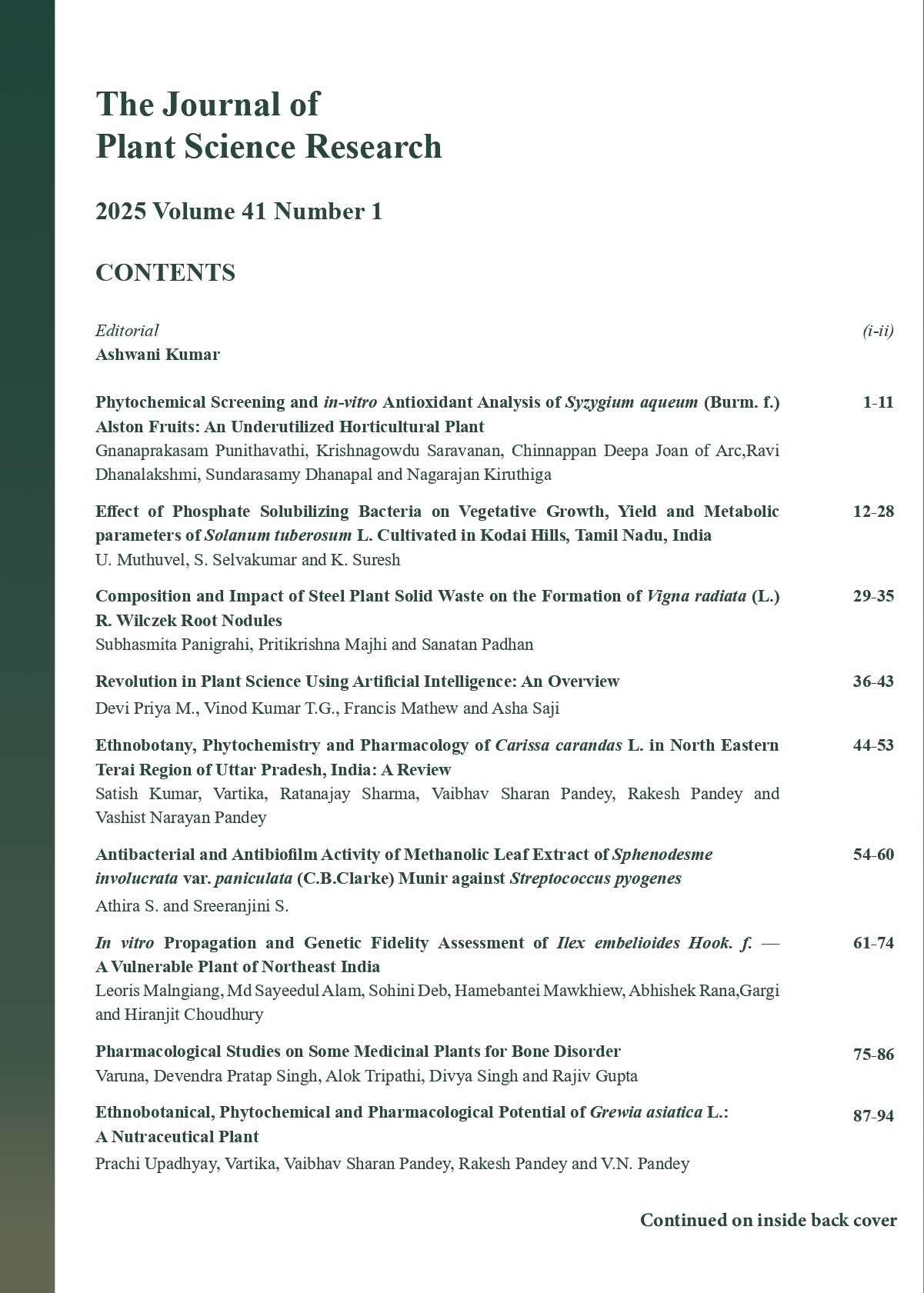The Journal of Plant Science Research - A UGC Care-Listed Journal
Published in Association with Forum For the Promotion of Plant Science Research
Current Volume: 41 (2025 )
ISSN: 0970-2539
e-ISSN: 0976-3880
Periodicity: Tri-annual
Month(s) of Publication: April, August & December
Subject: Botany
DOI: 10.32381/JPSR
Online Access is Free for Life Member
Increasing Pro-Vitamin A in Rice through Gene Amplification Technology
By : Minu B. Balkhi, Khalid Z. Masoodi, Rovidha S. Rasool, Farheena Shah, Nazia Hilal, Saba Mir, Wasia Wani, Sajad M. Zargar, Shafiq A. Wani, Riaz A. Shah
Page No: 121-127
Abstract
Three out of the eight Millennium Development Goals (MGDs); Eradication of poverty and hunger, reduction in child mortality and improving maternal health can be well addressed through food fortification initiatives. Half of the world population, particularly India relies on rice as the main food source being its main source of dietary energy. Since rice does not contain essentials vitamins like ?-carotene, therefore Indian population that is totally dependent on rice are at high risk of developing vitamin A deficiency. In India the burden of Vitamin A deficiency (VAD) amounts to an annual loss of 2.3 million disability-adjusted life years (DALYs). Jammu and Kashmir stands fifth after Mizoram, Goa, Assam, Manipur and West Bengal in having the highest VAD cases in the age group of 10-14 years. The prevalence of biochemical VAD among under-five years children in India is 62%, which is among the highest in the world and accounts for 330000 deaths in India alone (WHO, 2009). Combating VAD among an estimated 12 million preschool children, it is claimed that government programs to provide vitamin A supplements to the affected children are expensive and complicated. And it is asserted that conventional, non-GM methods of introducing or enhancing ?-carotene in other staple crops have been unsuccessful. Failure of Golden rice 1 and 2 in circumventing VAD is due to less amount of available pro-vitamin A. Assuming a ?-carotene to vitamin A conversion rate of 1:1, 200 grams of “Golden Rice” per day will provide enough vitamin A. Contrarily some researchers work with a conversion rate of 2:1, which implies a daily intake of 500 grams of rice to attain the FAO/ WHO figure of 400?g for children between the ages of 1 and 3, thus no agreement on the amount of vitamin A that “Golden Rice 2” can in principle provide. So there is a need for the development of third generation Golden rice which produces even higher amount of ?-carotene through Gene Amplification Technology (GAT).
Authors :
Khalid Z. Masoodi , Farheena Shah, Saba Mir, Wasia Wani and Shafiq A. Wani : Transcriptomics Laboratory, Division of Plant Biotechnology, SKUAST-K, Shalimar, Srinagar, J&K, India, 190025.
Minu B. Balkhi : Department of Biochemistry, GHHS Mirgund, J&K State Govt, J&K, India 190001.
Rovidha S. Rasool : Division of Pathology, SKUAST-K, Shalimar, Srinagar, J&K, India, 190025.
Nazia Hilal and Sajad M. Zargar : Department of Biotechnology, University of Kashmir, Srinagar, J&K, India, 190006
Riaz A. Shah : Proteomics Laboratory, Division of Plant Biotechnology, SKUAST-K, Shalimar, Srinagar, J&K, India, 190025.
Manoj K. Dhar : School of Biotechnology, Jammu University, Jammu, J&K, India, 180006






